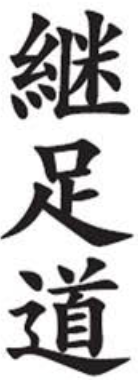
Welcome to the first Shinbun of the new decade! And we will open this decade with a review of, well, “Review.” We will remember that review is not just looking back nostalgically at the past, but also a self-critical and honest look at the present. We’ll also look back and one of the first “deep dives” conducted by Soke.
As always, please send pictures, pieces, ideas for pieces, stories, and upcoming events. I’ll get them posted and sent out with the next newsletter.
Yours in Budo,
-Sensei Scot Lynch
Yondan, Tsugiashi-Do
Shinbun Rewind
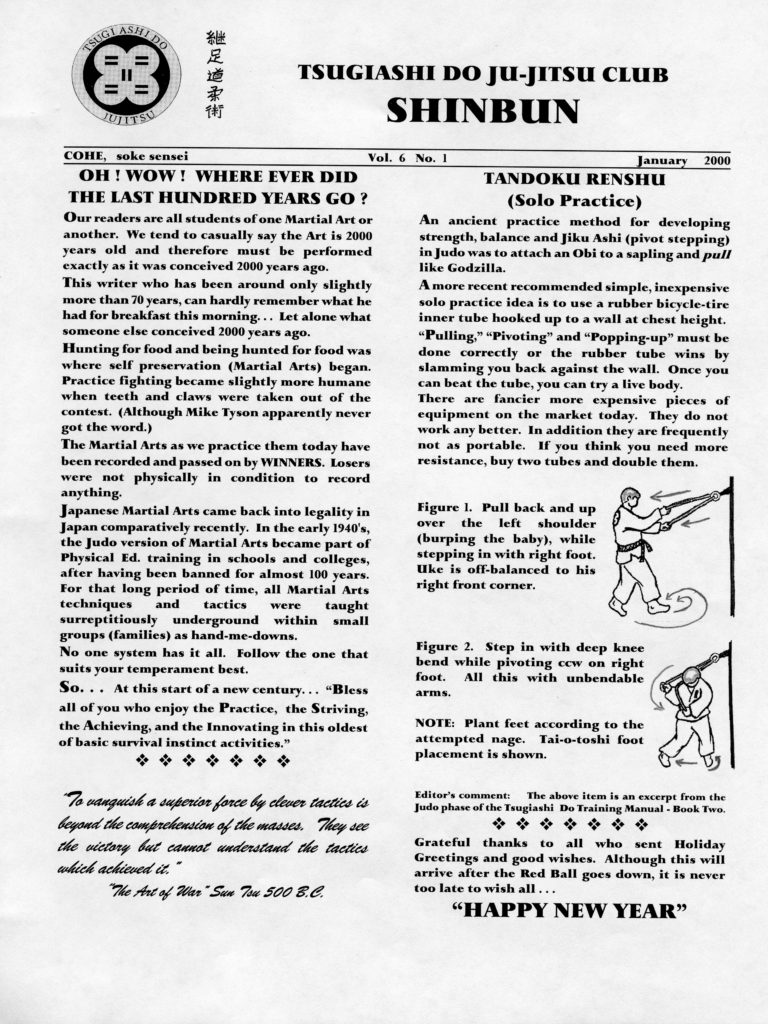
This is the first Shinbun of the new decade. But 20 years ago, Soke sent out the first one of the century. It contains some advice which one doesn’t hear from the typical Asian teacher:
![]() No one system has it all. Follow the one that suits your temperament best.
No one system has it all. Follow the one that suits your temperament best.
![]() So…at this start of a new century…Bless all of you who enjoy the Practice, the Striving, and Achieving, and the Innovating in this oldest of basic survival instinct activities.
So…at this start of a new century…Bless all of you who enjoy the Practice, the Striving, and Achieving, and the Innovating in this oldest of basic survival instinct activities.
The word that jumps out at me is “Innovating.” When one thinks of classical Japanese martial arts, painting outside the lines is not the first thing that comes to mind. We see in movies how one tends to take one’s lumps for doing so. And yet, here is our Soke, telling us that no system is perfect, and that we’ll have to follow what works for us.
Speaking of Innovating…
Confession time:
Soke is my teacher. I’m committed to all his lessons on training, practicing, fighting, focus, discipline, honor, loyalty, friendship, parenthood, citizenship… the list goes on. But physical training? I’m a serious gym rat. I’ve been to bodybuilding seminars. I train hard. I have always quietly studied exercising and implementing training regimes on my own. I’ve done triathlons. I do scientific high intensity interval training. I mean, the bicycle tire against the wall? Seriously? A couple of years ago, I purchased a TRX training device (to go with my core gravity straps), the “TRX Rip Trainer” because I felt that my abs and hips needed more resistance strength training. Planks, situps, crunches, leg lifts, all of the TRX cable hanging motions I do for my abs have been excellent. But I thought I needed more “core” power, more hip torque. I need to be able to perform kazushi against bigger, stronger opponents. I need explosive blocks. I need to be able to hit through my targets.
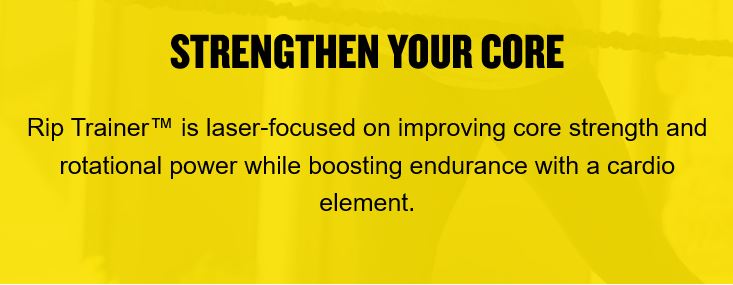
So I added the Rip Trainer to my abs/hips training regime. I’ve been very happy with it. It’s been a nice addition and I can feel my hips and torso twisting becoming faster and more powerful.
Then I scanned the January 2000 Shinbun a few nights ago. And I saw the old drawings of the bicycle tire against the wall, that I had seen a thousand times and, I’m embarrassed to admit, rolled my eyes a little. And then I paused. Then I thought some more. I think I might have scratched my head. And then I could no longer avoid the conclusion:
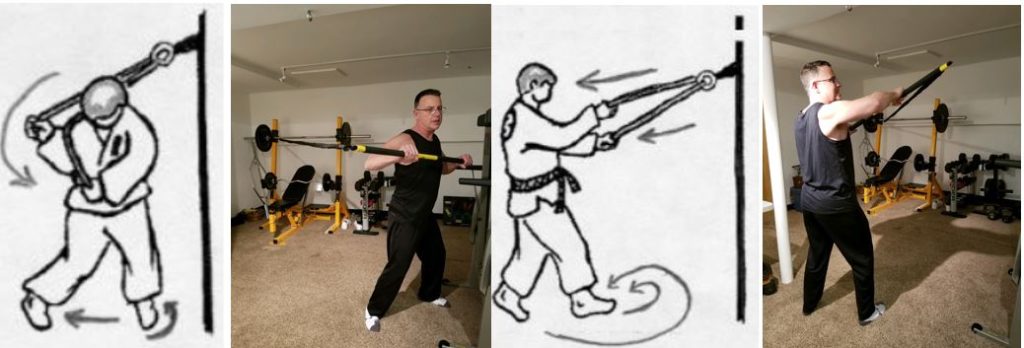
TRX 2020 looks suspiciously like 1990’s Shinbun.
I know Sensei. You told me.
The Millenium Seminar
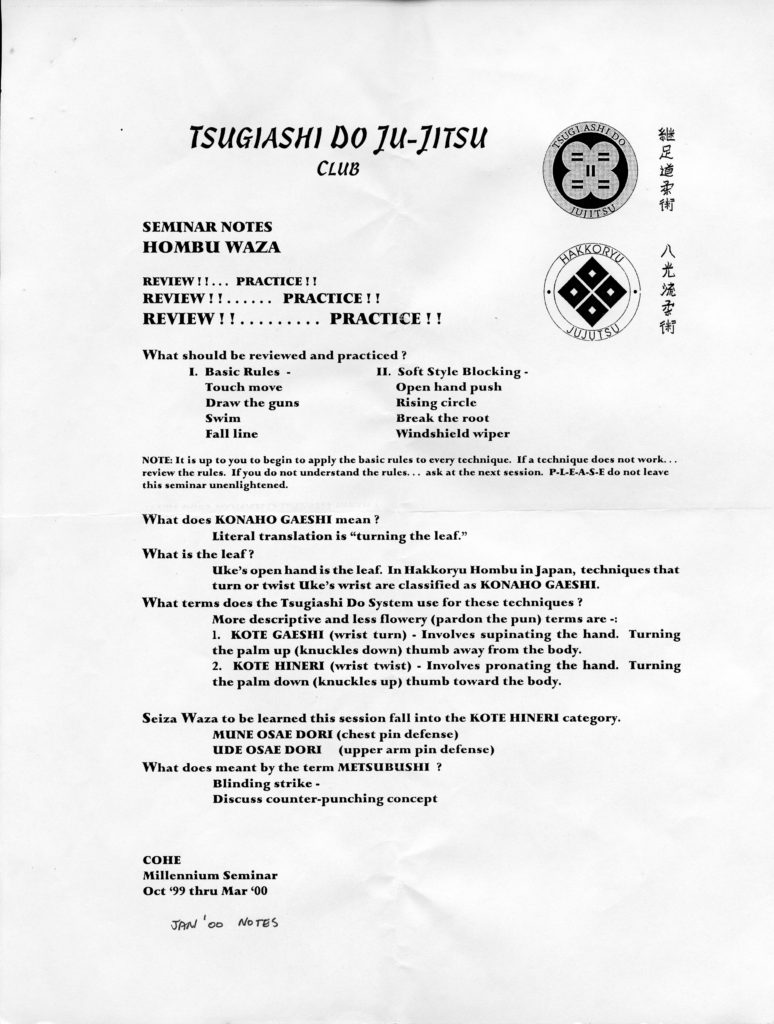
20 years ago this month, in January of 2000, Soke Cohe conducted the fourth of six planned seminars on Hombu Waza. The series (as discussed last month) went from October 1999 to March 2000, and which Soke named “The Millenium Seminar.” From 1:00 to 3:00 each second Sunday of the month, participants were taken slowly and methodically the fine details of only two moves, two seiza waza. These are the January notes from this seminar. We practiced extensively and were driven for perfection on each move. After all, there were only two moves per month, how hard could it be?
Soke wanted deep thinking, he wanted that deep thinking repeated many times per session, and he wanted that deep thinking installed into muscle memory.
![]() When you can diue deepe into your owne fansies, you thinke them as familiar to all others, as to your selfe.
When you can diue deepe into your owne fansies, you thinke them as familiar to all others, as to your selfe.
— Thomas Bilson, The Survey of Christs Suffering, 1604
In addition to the two moves per month, there was a set of overall Seminar notes, with three topics, discussions, terms, and hints. I will post these notes in the upcoming March Shinbun.
If you review the January 2020 notes here, you will see some familiar ideas. If they are not familiar, review them again and make them familiar. They are well worth the review.
Good Reads
What Swimming Taught Me About Happiness
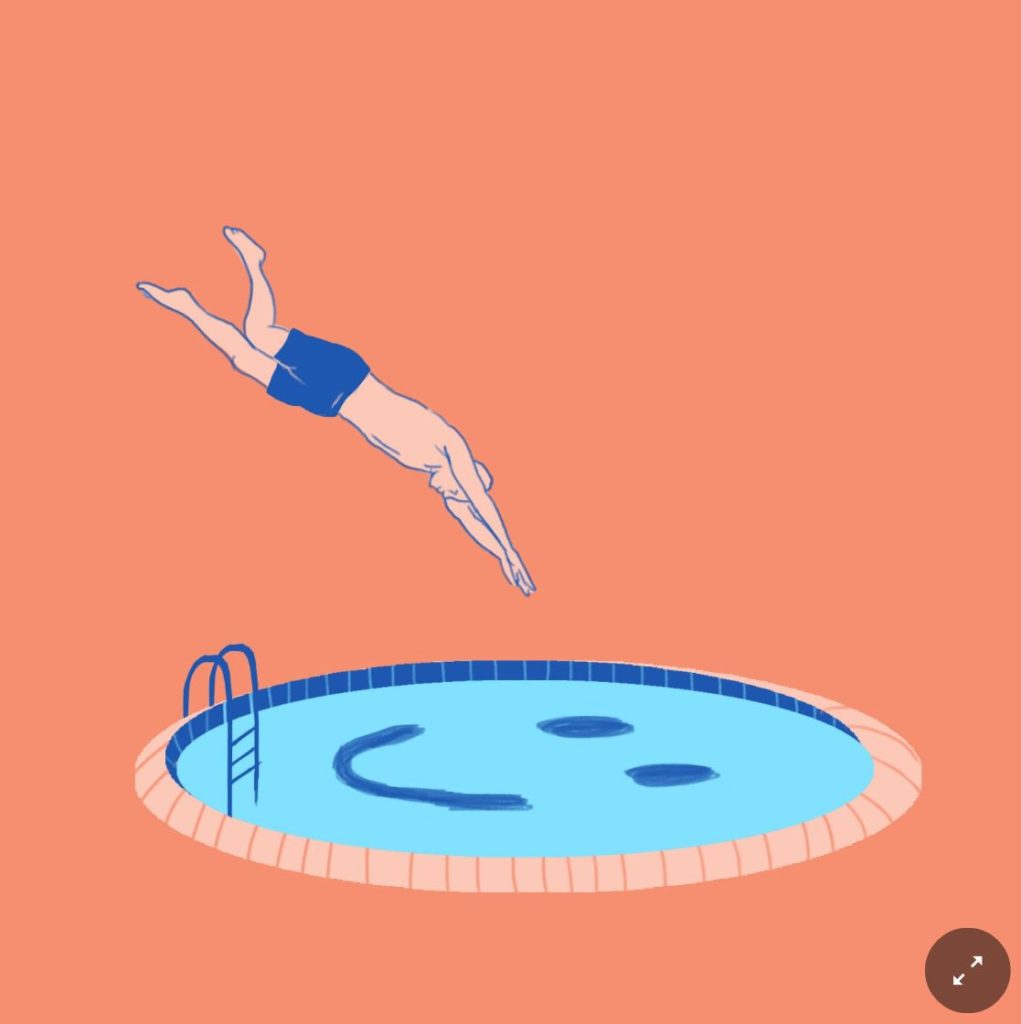
Lesson No. 1: It’s not about how fast you can go.
A New York Times opinion piece from last July regarding technique, results, and happiness. If you haven’t yet put together that it’s not about making people fall down or tap out, this is your article. The key to happiness is through technique. People falling down comes later, and by then it won’t matter as much. Because you’ll have something far more important: a love of technique, a love of getting it right.
![]() Ever the philosopher of the pool, Igor smiled and said, “You are all confused! Speed is not the goal; it is the result of perfect beautiful technique.
Ever the philosopher of the pool, Igor smiled and said, “You are all confused! Speed is not the goal; it is the result of perfect beautiful technique.
![]() What really mattered to Igor was excellence — the efficient stroke. Once you mastered that, he argued, speed would follow naturally. Speed was simply the welcome side effect of swimming well.
What really mattered to Igor was excellence — the efficient stroke. Once you mastered that, he argued, speed would follow naturally. Speed was simply the welcome side effect of swimming well.
![]() I’ve been thinking lately that there’s a lesson here that goes beyond the pool. We all wanted to swim faster and the more hysterically we tried, the more speed escaped us. The same goes for happiness. Everyone wants to be happy, yet the more directly we pursue happiness, the more elusive it becomes.
I’ve been thinking lately that there’s a lesson here that goes beyond the pool. We all wanted to swim faster and the more hysterically we tried, the more speed escaped us. The same goes for happiness. Everyone wants to be happy, yet the more directly we pursue happiness, the more elusive it becomes.
Soke often said, in times of personal crisis, “Get back on the mat!” At first I thought this was to avoid wasting time, to keep making progress in The Style, to avoid the regrets that come from wasting years off the mat, feeling sorry for myself. Later, a little wiser, I concluded that getting back on the mat was a way to take one’s mind of one’s own problems, and to focus on something good and innocent. But this simple opinion piece suggests that perhaps happiness really is a side effect of excellent technique. Perhaps the beauty of dedication to technique is a form of anesthetics for a hurting soul. So shake it off, and get back on the mat!
New Section: “The Wrong Way”
Last year, Sensei Steve Permuy suggested a section of the Shinbun for mistakes that can be offered up and used as teaching aids. He even offered up a picture of himself making a mistake in the way he was holding a sword during a training exercise. He tried valiantly to convince me that it was indeed a mistake, but if it existed at all, the error was so small as to virtually not be useful for our Shinbun. So instead I turned to my own rich library of breathtaking mistakes which can usually be seen via satellite photo.
The first photo is during the Yondan demonstration Sensei Gabriel Perez and I conducted in 2016. My one-handed Ude Hishigi on Sensei Perez fails to hold his arm vertical (straight up and down). This incorrect angle forces me to use more power in my suimon. While the move did technically work, it required too much power and was unfortunately a wonderful example of “The Wrong Way” to perform Ude Hishigi.
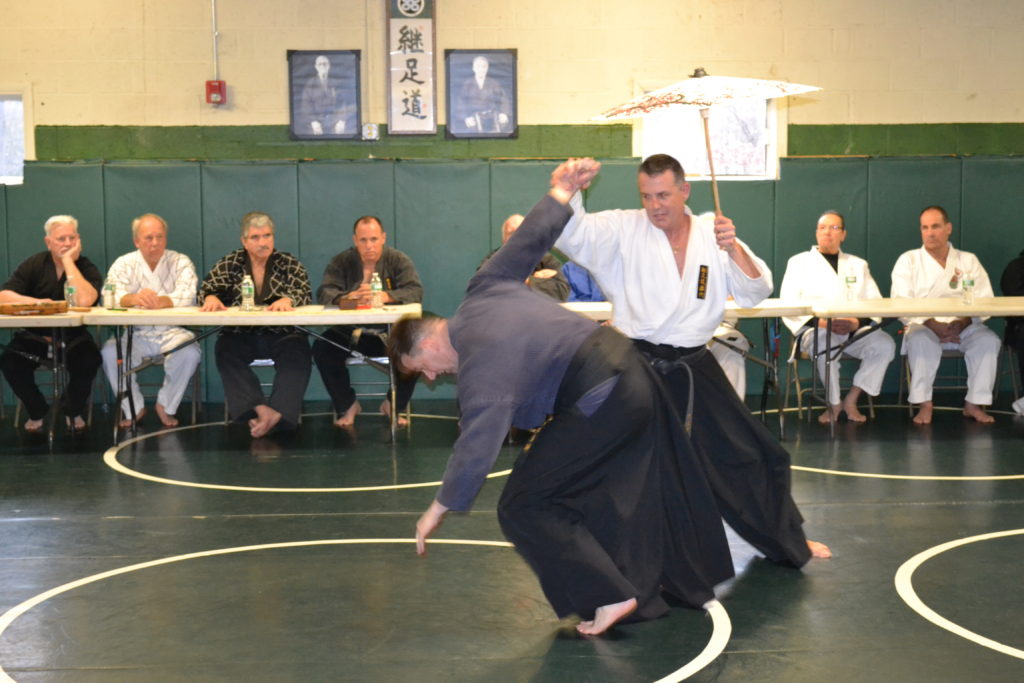
The second photo is Sensei Perez performing Ude Hishigi…correctly, my arm straight up and down, no power needed in his Suimon, the fall going off perfectly and with ease. Let’s call this one The Right Way.
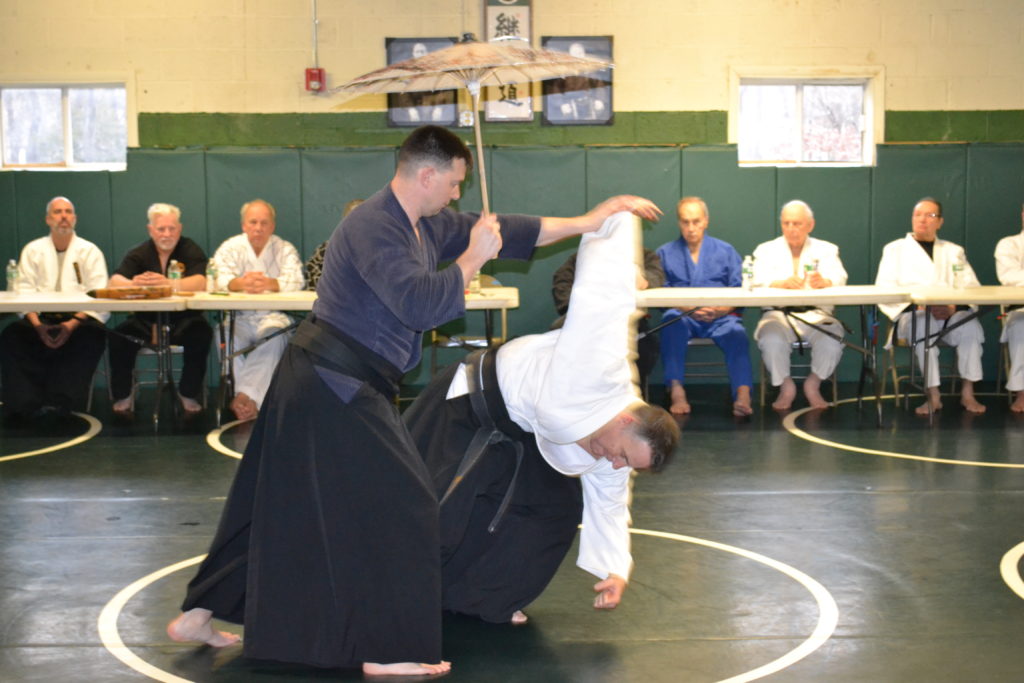
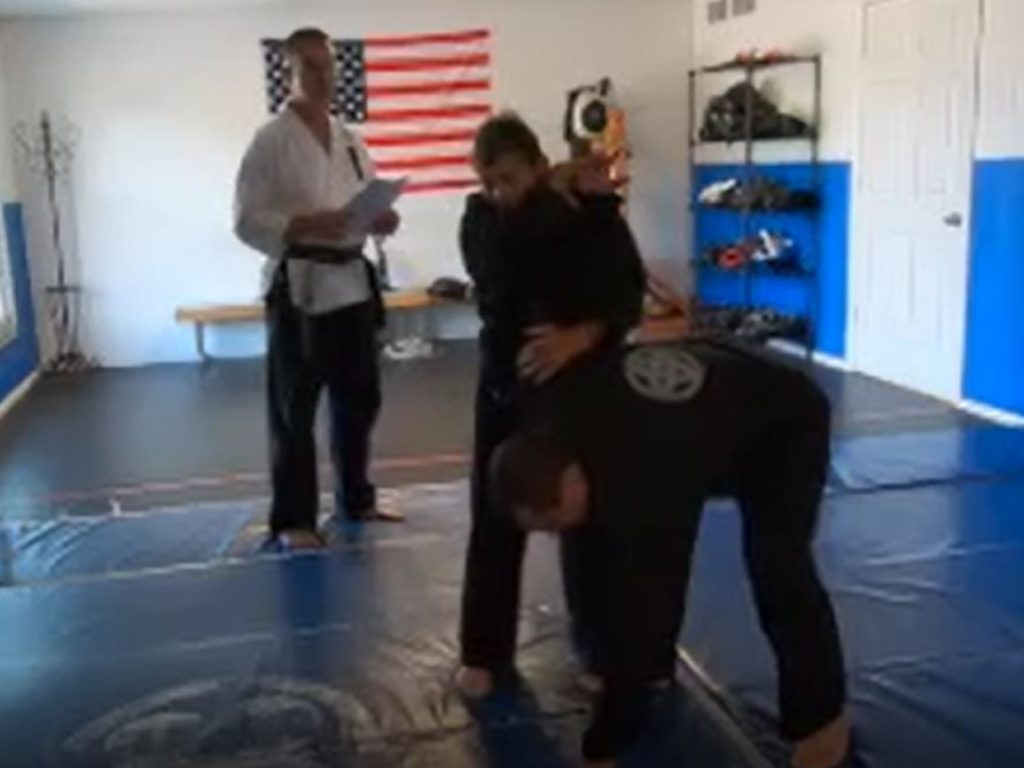
Shortly after receiving Sensei Permuy’s suggestion, and digging out the first two pictures, I found myself in Bayville, NJ training Sensei’s Nancy Guerriero and Brian Guerriero for their Nidan demonstration. When it was time to go over the Nidan version of Ude Hishigi, a more self-aware, more experienced, and wiser Sensei Lynch insured that Ude Hishigi was performed correctly, with Uke’s arm vertical, with Tori in perfect balance, with no power, and with ease. The third picture is Sensei Nancy Guerierro performing Nidan Ude Hishigi…The Right Way.
The Way it Was, at the Millennium Seminar
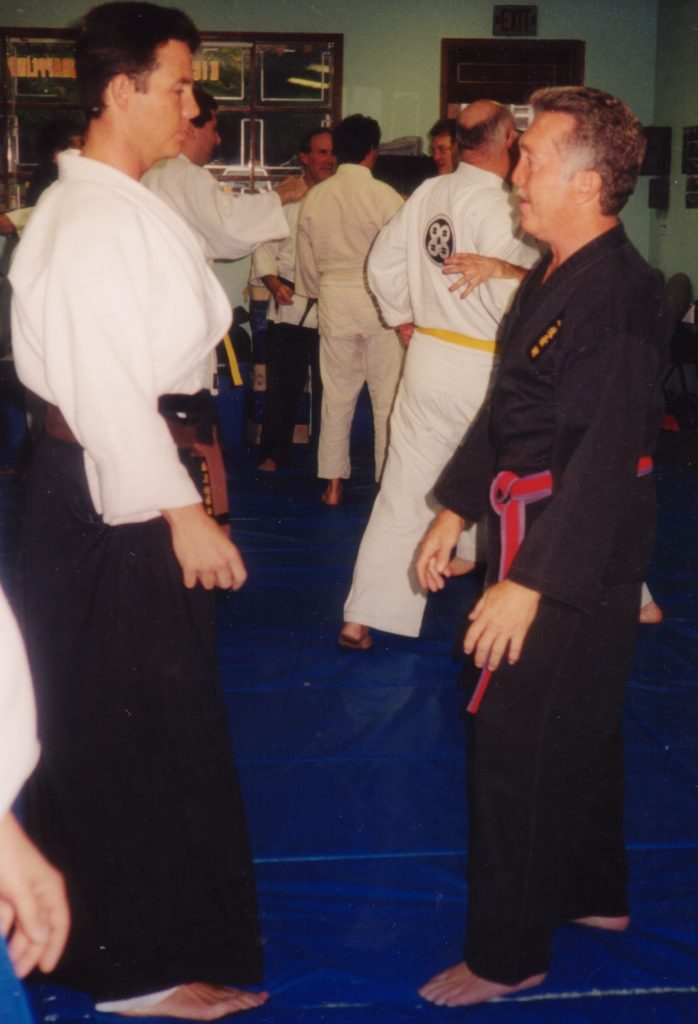
Thank you for reading our newsletter. More are coming and your feedback will make them better.
Faithfully,
Sensei Scot Lynch
Yondan, Tsugiashi Do
February 7, 2020
Nice job! A bicycle tube would of been cheaper!